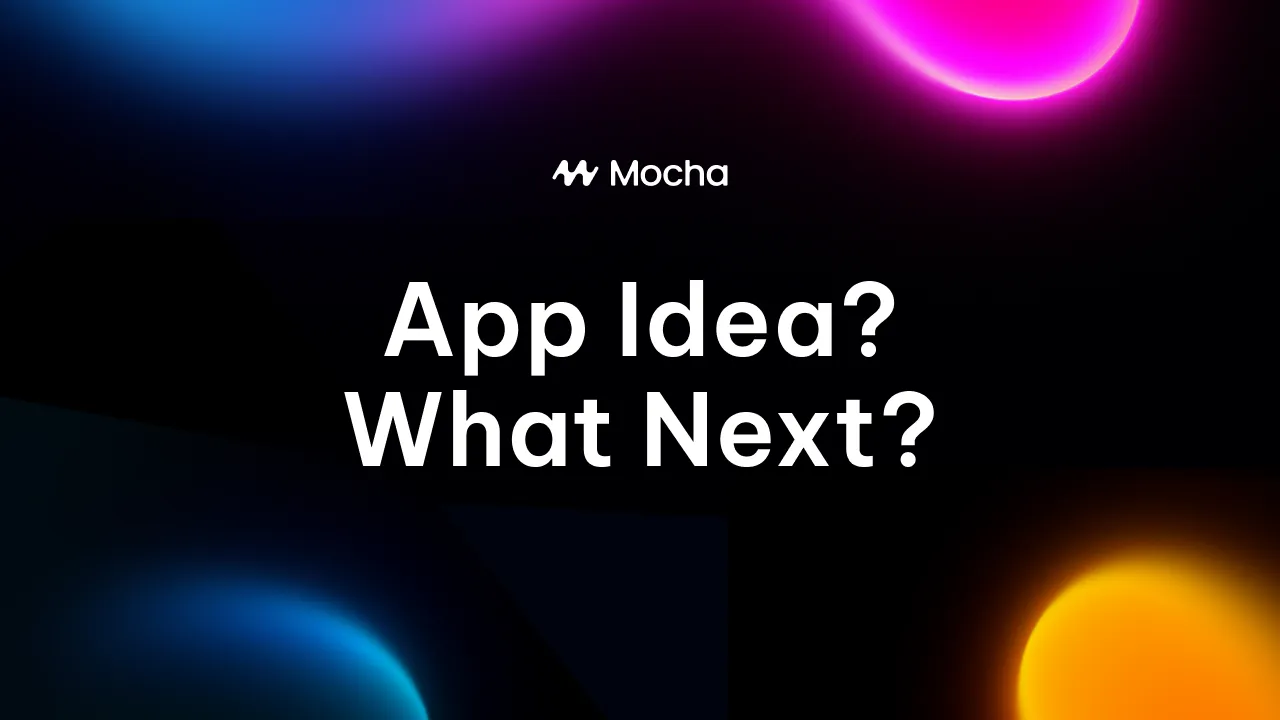You Have a Web App Idea - What Next? The 2025 Roadmap

Ideas are abundant. Execution is rare.
That brilliant app concept keeping you up at night? Thousands of others have had similar inspirations. What will separate you isn’t the idea itself—it’s what you do next.
In 2025, the path from concept to creation has fundamentally transformed. The obstacles that once prevented great ideas from materializing have largely disappeared.
Let me show you the new roadmap.
The Old Path vs. The New Reality
Historically, the journey from app idea to reality followed a predictable, painful path:
- Learn to code (months/years) or hire developers ($20,000+)
- Create wireframes and mockups (weeks)
- Build a minimum viable product (months)
- Test with users, iterate, fix bugs (months)
- Launch, market, and pray you got it right
This approach was slow, expensive, and riddled with risk. Most ideas died before they ever saw the light of day.
The landscape has fundamentally shifted. The new path leverages conversation-driven creation to collapse this timeline from years to days.
Step 1: Clarify Your Vision (1-2 Hours)
Before touching any tools, get crystal clear on what you’re creating:
- Who is this for? Define your user with uncomfortable specificity
- What specific problem does it solve? Not features—outcomes
- How will users know it’s working? Define success metrics
- What’s the simplest version that delivers value? Find the core experience
This clarity is your compass. It will guide every subsequent decision.
Don’t skip this step. The most common failure point isn’t technical execution—it’s solving the wrong problem or building something nobody wants.
Step 2: Materialize Through Conversation (2-4 Hours)
With vision in hand, open Mocha and start a conversation about what you want to build.
Unlike traditional development, you don’t need to translate your vision into technical specifications or wireframes. Simply describe what you want to create in plain language:
“I’m building an app that helps independent coffee shops manage their loyalty programs. Shop owners need to easily set up reward structures, and customers should be able to scan a QR code to earn and redeem points.”
Through vibe-coding, watch as your described vision materializes in real-time. No coding. No technical translation. Just conversation.
The initial version may not be perfect, but it gives you something tangible to refine—a starting point far beyond what was possible just a few years ago.
Step 3: Rapid Refinement (4-8 Hours)
This is where the conversation-first approach truly shines.
As you see your app materializing, you’ll notice aspects that don’t align with your vision. Instead of waiting for a development cycle, simply have a conversation about what needs to change:
“The loyalty point display should be more prominent on the customer dashboard.” “The process for redeeming rewards feels too complicated—let’s simplify it to a single tap.” “Shop owners need clearer analytics on which rewards drive repeat visits.”
Each refinement happens in real-time, allowing you to rapidly iterate toward your ideal experience. What once took weeks now happens in hours.
Step 4: Add Intelligence and Connection (2-4 Hours)
With the core experience defined, elevate your app by adding:
- Personalization: Tailor experiences to individual user preferences and behavior
- Integration: Connect with existing tools your users already employ
- Intelligence: Add recommendation engines and predictive features
- Automation: Remove manual steps wherever possible
These elements transform a useful app into an indispensable one.
The key is progressive enhancement—start with the core value, then layer on sophistication. This approach ensures you’re building on solid foundations rather than creating complexity for its own sake.
Step 5: Test With Real Users (1-2 Days)
No vision survives first contact with reality unchanged. Get your app in front of actual users as quickly as possible.
The conversation-driven approach enables a critical advantage: you can modify the app in real-time based on user feedback.
“This button placement is confusing.” → Move it instantly, watch the user’s reaction.
“I wish it would remember my previous selections.” → Add that capability on the spot, test if it solves their issue.
This real-time iteration collapses the feedback cycle from weeks to minutes, dramatically accelerating your path to product-market fit.
Step 6: Launch and Learn (Ongoing)
With a validated, user-tested app, it’s time to share it with the world.
The launch isn’t the finish line—it’s the starting point for real learning. Use Mocha’s analytics to understand:
- Which features get used most frequently
- Where users spend the most time
- What conversion points need optimization
- Which user segments find the most value
These insights drive your continued refinement, ensuring your app evolves based on actual usage rather than assumptions.
Real-World Success: Emma’s Story
Emma had an idea for an app that helped fitness enthusiasts find workout partners with complementary goals and schedules.
Using the traditional approach, she received quotes ranging from 50,000 for initial development, with a 4-6 month timeline.
Using conversation-driven creation with Mocha, she:
- Defined her vision in 90 minutes
- Created the core app functionality in an afternoon
- Refined the experience over two days
- Tested with 10 early users, incorporating feedback in real-time
- Launched to her target market in less than a week
Total cost: A fraction of traditional development Total time: 6 days from concept to launch
Within three months, her app had 5,000 active users and secured its first round of funding.
The New Founder Advantage
This collapsed timeline from idea to reality creates an unprecedented advantage for founders without technical backgrounds or massive budgets.
You can now:
- Test multiple concepts before committing to one direction
- Get market feedback before investing significant resources
- Iterate rapidly based on real user behavior
- Scale only after validating demand
More importantly, you can maintain control of your vision without dependency on technical translators or external developers.
Beyond the Launch: Building a Business, Not Just an App
The most successful founders recognize that the app itself is just one component of a successful business. As you move from creation to growth, focus on:
- User acquisition: How will people discover your app?
- Retention mechanics: What keeps users coming back?
- Monetization strategy: How will you capture some of the value you create?
- Feedback loops: How will you continuously learn and improve?
The conversation-driven approach frees up significant mental bandwidth to focus on these critical business elements rather than getting lost in technical implementation.
The Future Is Conversational Creation
We’ve entered an era where the limiting factor in bringing ideas to life is no longer technical skill or financial resources—it’s clarity of vision and speed of iteration.
The ability to materialize concepts through conversation rather than code means that the best ideas can now rise to the top regardless of who conceives them.
This democratization of creation will unleash a wave of innovation from previously sidelined creators—people with deep domain expertise but without technical backgrounds.
The barrier between imagination and implementation is dissolving. The gap between idea and reality is closing. The future belongs to those who can clearly articulate their vision, not just those who can code it.
Your app idea deserves to exist. Start the conversation today.

